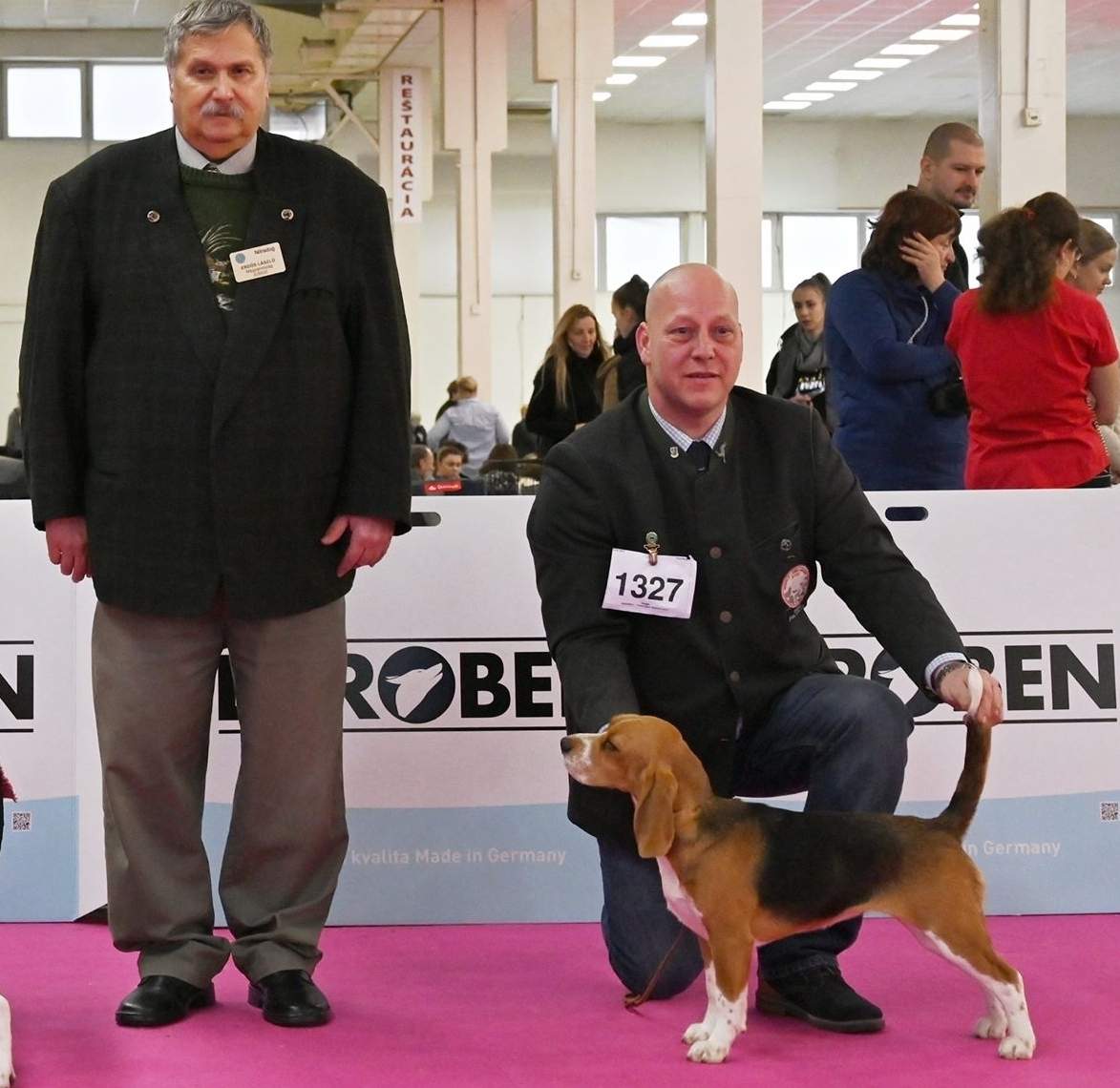What is a dog show?
The first exhibition of pedigree dogs took place in June 1859 in Great Britain. Austria followed in 1863 with the first exhibition in Vienna. There were 357 dogs shown.
At dog shows lot of different breeds are presented. The offspring of the race will be shown. Breeders and owners can measure their dogs by a judge, whether their dog fits the internationally accepted standard. The judges are in their assessment exclusively committed to the breed standard. Their judgment is clear and indisputable.
The major exhibitions are organized by member associations of the FCI (let's talk about Europe mainly). Within the FCI are two kinds of exhibitions, distinguished by the honors awarded:
• National Dog Shows
• International dog show
On national shows, there is a CAC (Certificat d'Aptitude au Championnat) of the respective breed associations awarded. The CAC is the candidature of the Champion title of the country. At international exhibitions in addition to the CAC the CACIB (Certificat d'Aptitude au Championnat International de Beauté) will be awarded. This is the requirement to the International Beauty Champion.
The national breed associations organize special exhibitions, such as Club Shows and two exhibitions every year, will be awarded to an international special event, namely the European and World Dog Shows.
At the dog show you can show dogs bred with FCI pedigree. These dogs must be microchipped and on the day of the exhibition they have to have a valid rabies vaccination. Basically, for an international dog show the dog has to be entered already almost 8 weeks before. For the owner that means to fill out a registration form and pay the appropriate registration fee.
What should the dog know on the show?
The judge examines the position of the teeth of the dog and checks if it has a full dentition. Therefore it is important that the dog allows the tooth control.
The dog should trot on the left side of the people and not gallop.
The dog is stacked on the judges' table and / or parallel to the judge on the ground, the front legs just below the chest, the hind legs drawn up slightly inclined to the rear. Each breed has its own way of stacking.
The breeds are divided into different groups at the FCI.
The dog is entered in a given class. The first criteria for the classification of a class are the sex and age of the dog. Date for the age in a given class is always the date of birth of the dog.
The classification
(Baby class 3-6 months)
Puppy Class: 6 - 9 months
Junior Class: 9 - 18 months
Intermediate Class: 15 - 24 months
Open class: over 15 months
Working class: from 15 months for dogs with FCI Working Dog Certificate (in Austria field trial on hare)
Champion class: from 15 months for dogs with confirmed national or international championship
Veteran class: from completed 8 years
The valuation
To evaluate the dogs based on breed standards in the most cases the judges writes for each dog a written critique that describes its strengths and weaknesses, and also includes the value note.
Possible value scores:
• Excellent - for dogs that are very much in the standard
• Very good - for dogs with a few minor errors
• Good - for dogs with larger errors
• Adequate - for the appropriate breed type dogs, with major defects
• Disqualified - not for the appropriate breed type dogs, aggressive dogs, dogs with certain hereditary defects and dogs with disqualifying features according to their breed standard
• No rating - for dogs, which can not be judged because of their behavior or other circumstances
In the baby/puppy class they evaluate with vp - very promising, p - promising or np - not promising.
Within each class, the four best dogs are placed behind each other, if they were at least "very good". The regulations, which classes may be awarded with a CAC are also different from country to country.
At an International Dog Show best male and best female of the class winners will be awarded with the CACIB. The judge can award a maximum of one CACIB and Reserve CACIB per sex. He must not award CAC or CACIB.
The best dogs come to the conclusion of the regular judging to determine the best dog of the breed ("best of breed", BOB), at an International Dog Show, the juniors, the CACIBs and veterans run for the BOB. If this is awarded, the judge decides about the best young dog in the race ("Junior Best of Breed", BOJ / JUNBOB) and the best dog of the opposite sex ("Best of Opposite Sex", BOS).
The best dogs of each breed after the regular judging of their breed compete per FCI groups separated from each other, for the best dog in the group. They award the "Best of Group" title for the best one of each group. The winners of the groups compete again to determine the best dog of the exhibition, the "Best in Show".
Champion?
Once a dog has received in a country the number of CAJC / CACs set by the national organization and filled the appropriate established conditions by the breed club, it can apply for the title "National Youth Champion / Veteran Champion/ Champion" For the acquisition of the title "FCI International Youth/Beauty/Show/Veteran Champion" the dog must fulfill the conditions of the FCI. Only if a title is confirmed by the breed association, the dog is allowed to carry the title before his name.
